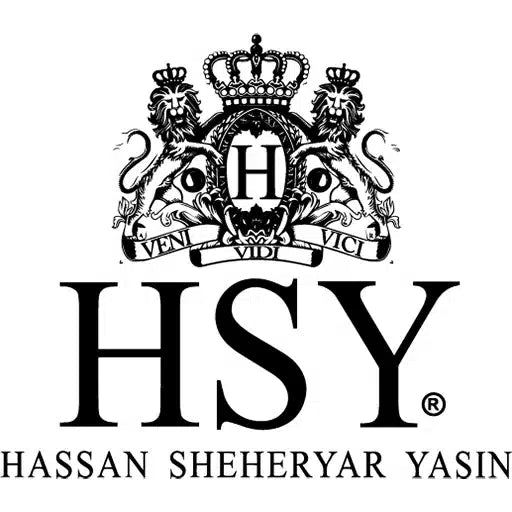
Why do brides wear gajras and floral jewelry on mehndi?
Share
Weddings in Pakistan are not just ceremonies. They are timeless celebrations where culture, beauty, and tradition bloom together. Among the many enchanting details of these festive days, nothing feels more alive and fragrant than the delicate gajra for bride mehndi celebrations. Woven from fresh flowers, adorned as jewelry or hair accessories, these blooms turn the bride into a vision of grace, carrying a tradition that is both meaningful and magical.
Why brides wear gajras
The tradition of wearing gajras with traditional bridal dress is rooted in symbolism and spirituality. Flowers are seen as pure, natural, and blessed. Their fragrance believed to attract joy and positivity. When a bride wears gajras, she adorns herself with nature’s own ornaments, symbolizing innocence, beauty, and fertility. Their short life reminds her of the fleeting yet precious moments of her youth, while their fragrance represents the sweetness she brings into her new home. This is why brides wear gajras not just as decoration, but as a poetic statement of love, purity, and hope.
Gajra for bride mehndi
The mehndi function is one of the most vibrant and playful wedding events. On this day, the bride often chooses floral jewelry for mehndi brides rather than heavy gold ornaments, embracing the lightness and joy of the occasion. The gajra for bride mehndi is usually made of jasmine or roses, delicately placed around her wrists, braided into her hair, or worn as anklets. These fresh blooms perfectly complement the colorful lehenga or sharara she wears, glowing against the bright yellows, greens, and oranges that define the mehndi palette.
Floral jewelry for mehndi brides
Floral jewelry for mehndi brides has become a signature style, blending tradition with modern beauty trends. Brides wear flower crowns, necklaces, earrings, and haathphool made from roses, marigolds, or jasmine, often highlighted with pearls. This look is not only stunning but also comfortable compared to the weight of gold jewelry. It allows brides to enjoy the dancing and laughter of mehndi without restraint, while staying true to the cultural roots of mehndi floral accessories.
Mehndi floral accessories
Mehndi floral accessories extend beyond jewelry. They include headpieces, hair braids, and anklets, each enhancing the bride’s look with freshness and charm. A mehndi gajra hairstyle, for example, often features jasmine flowers woven into braids or buns, filling the air with fragrance and giving the bride an ethereal aura. Some brides even choose vibrant rose or marigold chains draped across their shoulders or waist, creating a bold yet elegant statement. These accessories connect the bride with nature and make her glow effortlessly.
Pakistani mehndi gajra tradition
The Pakistani mehndi gajra tradition is more than a fashion statement. It is a cultural memory. For generations, mothers and grandmothers have carefully made jasmine gajras for mehndi ceremonies, slipping them onto the bride’s wrists with prayers for her happiness. This ritual is not only about beauty but about blessings. Wearing gajras ties the bride to her heritage, reminding her that she is part of a larger story, one where traditions bloom again with each new wedding.
Jasmine gajra for mehndi
Among all flowers, the jasmine gajra for mehndi holds the most special place. Its delicate white petals and intoxicating fragrance are considered symbols of purity, devotion, and love. Brides often prefer jasmine because its soft color contrasts beautifully with the vibrant outfits of mehndi. In many households, the fragrance of jasmine fills the wedding venue, creating an atmosphere of calm joy, making the bride feel like she is wrapped in nature’s own blessings.
Bridal floral jewelry trends
Over the years, bridal floral jewelry trends have expanded beyond traditional jasmine and roses. Today, brides experiment with orchids, baby’s breath, and even artificial flowers in pastel shades, adorned with beads and pearls for durability. Some modern brides choose flower jewelry for brides in matching tones with their outfits, while others opt for bold contrasts. This mix of old and new allows brides to honor tradition while expressing their individuality, proving that floral jewelry is as timeless as it is versatile.
Mehndi gajra hairstyle
The mehndi gajra hairstyle is an art form in itself. From classic jasmine buns to bohemian braids woven with roses, each style adds grace to the bride’s look. In rural areas, women often use fresh flower chains for simple, rustic hairstyles, while in cities, brides collaborate with stylists to create intricate floral headpieces. Whether simple or elaborate, the floral touch transforms hair into a living crown, making the bride’s appearance radiant and unforgettable.
What brides and guests wear on mehndi
The mehndi is known for its festive energy, and what brides and guests wear reflects this joyous mood. Brides usually choose outfits in shades of yellow, green, or orange, embellished with gota work, mirror details, or light embroidery. Paired with mehndi floral accessories, these ensembles radiate youthful charm. Guests, too, embrace the theme, wearing vibrant shararas, lehengas, and kurtas, often adorned with simple gajras or floral bracelets to match the celebratory spirit. Together, they turn the mehndi into a garden of color, laughter, and fragrance.
Cultural meaning of gajras
The cultural meaning of gajras lies in their ability to bring communities together. They are not just flowers but symbols of shared traditions, woven into songs, dances, and laughter. Wearing gajras connects brides to generations before them, making them part of a living heritage. They also remind us of the beauty of simplicity, how nature’s blooms, without gold or diamonds, can make a bride feel just as regal. In this way, gajras and floral jewelry for mehndi brides become timeless emblems of love, joy, and cultural pride.







